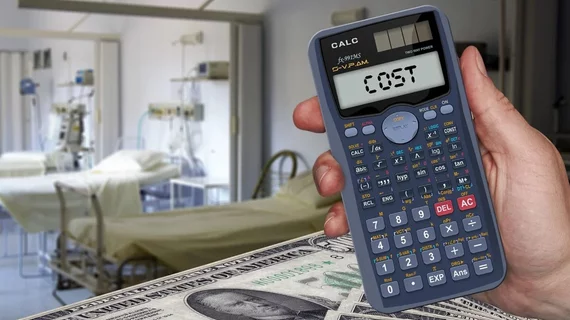Rand study suggests hospitals are exorbitantly overpaid by private insurers; AHA reacts
If private insurers and employers paid hospitals at Medicare rates, their collective bill in 2018 would have been almost 60% lower than what they paid.
In real dollars, these payers’ combined savings would have nearly reached $20 billion.
That’s according to a new analysis from the Rand Corporation, which reviewed data from 3,112 community hospitals across all states except Maryland.
Looking at $34 billion worth of claims filed for around 750,000 inpatient stays and 40 million outpatient visits, lead researcher Christopher Whaley and colleagues found wide variations by state and, overall, an average above-Medicare tab of 247%.
In a press release, Whaley comments that some of the highest prices may have been warranted by exceptional quality or highly specialized care.
“However, if two hospitals have similar quality, then any difference in prices may be harder to justify,” Whaley says.
Especially during the COVID-19 pandemic, he adds, “employers need transparent information on the prices that they and their employees are paying for healthcare services.”
Katherine Hempstead of the Robert Wood Johnson Foundation, which sponsored the study, says the gap in private vs. public hospital prices raises questions about efficiency in the former.
“The goal of this work is to arm employers with data so they can negotiate more effectively,” Hempstead says. “Curbing excessive spending on employer health insurance is in the public interest.”
The report’s supplemental materials include relative and standardized prices for each analyzed facility, along with CMS Hospital Compare star ratings.
Meanwhile the American Hospital Association has issued a pointed response to the Rand study.
Tom Nickels, the AHA’s executive vice president, says the Rand report erroneously suggests private payers would do well to benchmark Medicare rates despite their understanding that CMS reimburses well below the cost of providing care.
Nickels also upbraids the Rand team for taking research shortcuts and “cherry picking” data to analyze.
“These concerns are compounded by a global pandemic that represents the greatest financial threat in history for hospitals and health systems,” Nickels says. “The case for pulling resources from care providers was weak from the start. It is beyond reckless to advance this approach now.”

